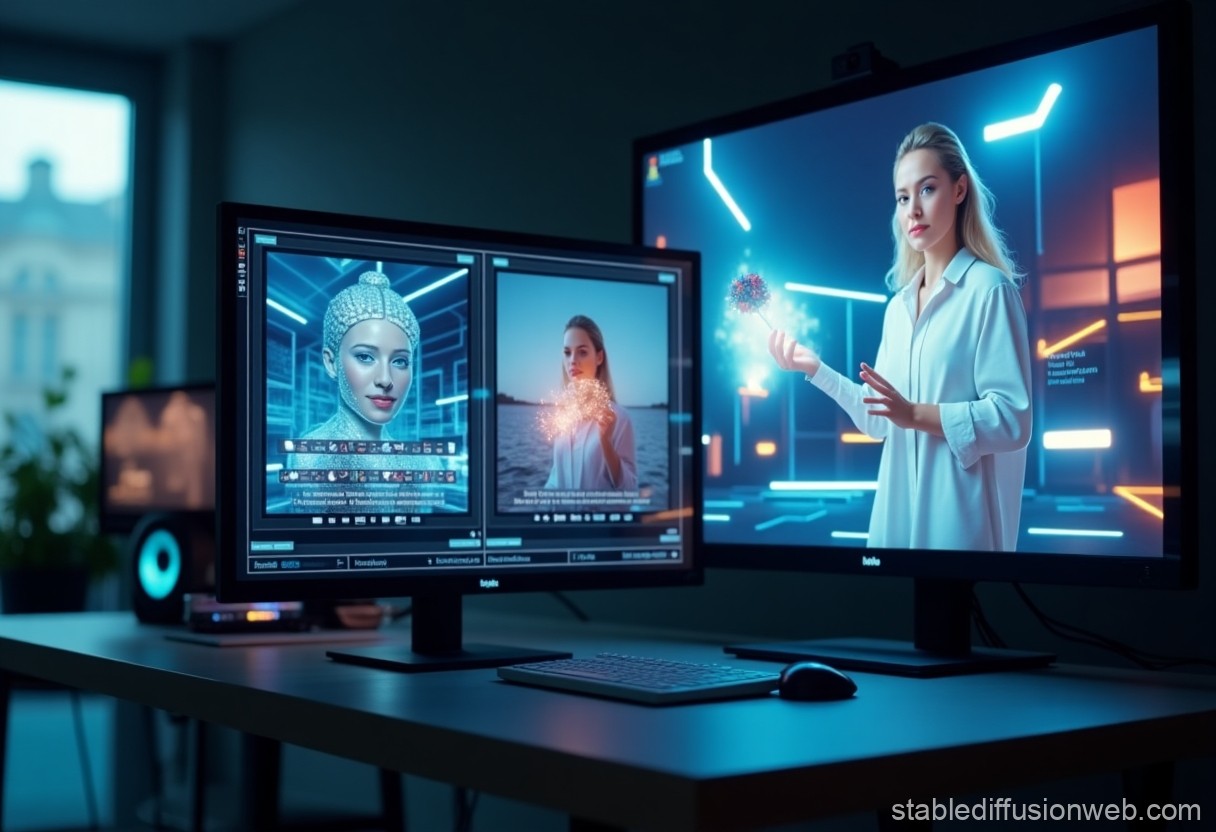Generative AI has reached a new milestone: the ability to produce acceptable videos from a single image or short sentence. Companies leveraging this technology promise that anyone with basic visual content—such as images or short recordings—can create professional-grade promotional videos. This is a significant advantage, as video content often outperforms static images or documents in terms of engagement and impact.
On Monday, Peak XV and Tiger Global-backed startup Avataar unveiled a revolutionary tool named Velocity. This AI-driven platform allows users to generate product videos directly from a product link. In doing so, Avataar enters a competitive space that already includes tech giants like Amazon and Google, both of which are exploring AI-based video tools for advertising.
Similar to platforms like Lica and Sythesia, Velocity addresses a common issue: video production is expensive. Traditional methods often limit the number of products that can be featured in videos. With AI advancements, however, video creation is becoming more cost-effective and scalable, enabling brands to generate promotional clips in bulk.
Founded in 2015 by Sravanth Aluru—a former Microsoft and Deutsche Bank executive—Avataar initially specialized in creating interactive experiences, AI-enhanced imagery, and 3D models for e-commerce. Having raised over $55 million in funding, the company is now shifting its focus toward AI-driven video production for brands.
Although 3D models and interactive experiences generally boast higher conversion rates, videos remain the medium of choice due to their ability to engage a broader audience. The startup asserts that while conversion rates for videos may be lower than 3D models, their widespread reach compensates for this disparity.
Avataar began testing its AI-powered video creation tool with select clients in February 2024. Initially, the process required human intervention to assist brands. By September 2024, the company had refined its system into the fully automated Velocity tool, now used by notable clients such as HP, Victoria’s Secret, Lowe’s, Newegg, Marina, TVS, and Bajaj.
Velocity shines in generating videos for products that don’t typically warrant a significant marketing budget. By automating video production for entire catalogs, the tool aims to enhance customer experience and improve conversion rates through engaging, motion-driven storytelling.
“We can now create videos for entire product catalogs through Velocity, improving customer experience and increasing conversion rates with storytelling around each product,” said Aluru in an interview with TechCrunch.
The tool also offers an API, enabling seamless integration with e-commerce platforms to automate video creation for product listings.
Aluru emphasized the competitive edge of Avataar’s solution, citing its extensive product data and expertise in 3D rendering. “Our models are designed to understand the unique attributes of various product categories. For instance, the tool highlights different features for a hammer compared to a smartphone. The focus is on better storytelling to drive purchases,” he explained.
In addition to presenting product details, Avataar’s videos aim to create aspirational value, enhancing the brand appeal of the items showcased. The company has also implemented strict safeguards to ensure brand safety and accuracy, allowing the model to detect and reject flawed outputs.
Amir Konigsberg, an investor and founder of the now-defunct e-commerce startup Twiggle, sees potential in video generation for online sales but stresses the need for uniqueness.
“Automating video creation from product links is a logical evolution for e-commerce. Video is proven to boost engagement and conversions, and scaling this efficiently makes sense. However, with many competitors focusing on similar technologies—such as photorealistic renders and background effects—the real challenge is standing out, maintaining consistency, and ensuring compliance with licensing standards,” Konigsberg shared with TechCrunch.
He also noted that earlier adoption of AI video solutions was hampered by challenges in maintaining quality at scale. Recent advancements, however, have positioned tools like Velocity as viable options for mass adoption.


